Nonoperative treatment
1. No immobilization, non-weight bearing and early motion
Indication
Undisplaced fracture which is perfectly stable.
Nonoperative treatment is indicated if the fracture is undisplaced or minimally displaced and the joint is absolutely stable and there are no other indications for surgery (eg., neurovascular injury, compartment syndrome).
A careful knee exam with valgus/varus stress test done in both full extension and 30° of flection must be peformed. If there is any question about medial/lateral instability, or anterior/posterior stability, or rotatory instability, then further investigations such as MRI should be obtained.
Never immobilize in plaster. If splinting is necessary, then immobilize in a hinged fracture brace.
Start early active range of motion as soon as possible.
2. Posterior plaster splint
Indication
Only as a means of temporary splinting.
3. Cylinder cast (stove pipe)
Indication
For stable extraarticular fractures as a means of definitive treatment.
Splint padding
With the limb in extension and supported, apply splint padding around the leg. Begin high in the thigh and extend it four finger breadths above the malleoli. Make the padding five layers thick in the upper thigh and particularly above the malleoli to prevent pressure problems.
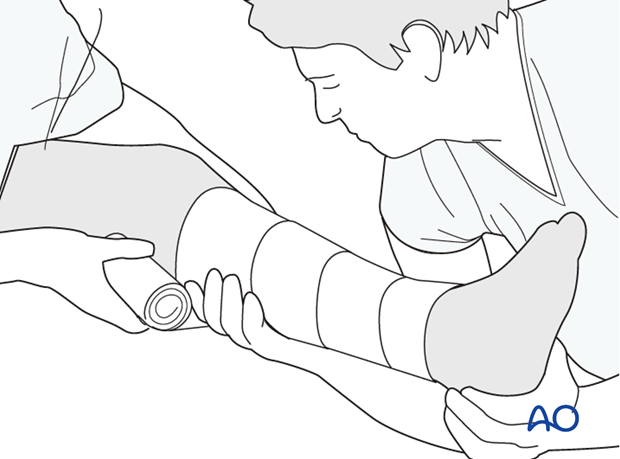
Plaster application
15 cm wide plaster is applied in a circular way around the lower limb starting from high on the thigh until the supramalleolar region. Use 5 layers of plaster.
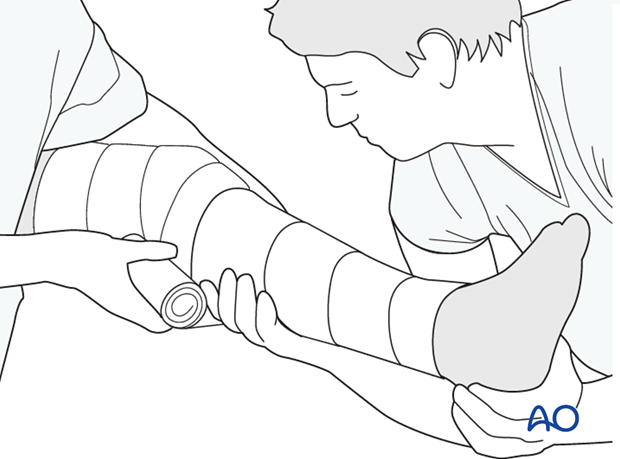
While the plaster is drying a supracondylar mold is placed and held until the cast material is hard.
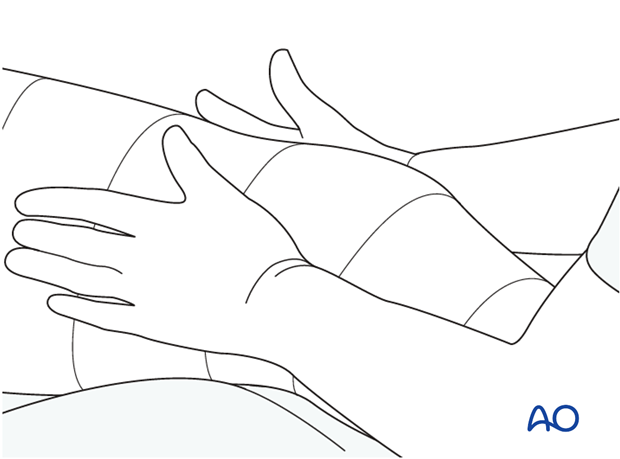
4. Knee immobilizer
Indication
All fractures as a means of temporary splinting.
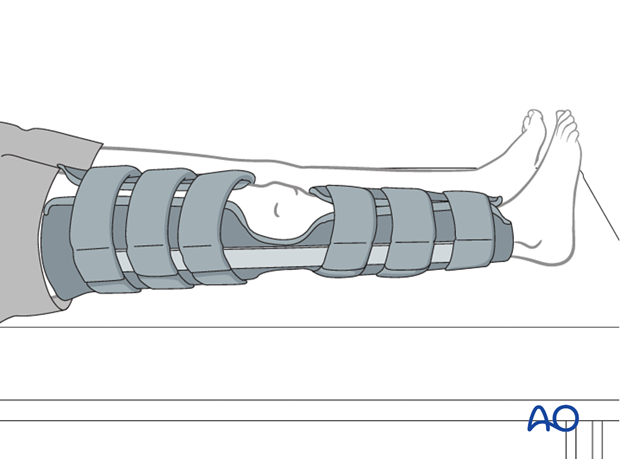
5. Hinged fracture brace
Indication
Angular splinting of the extremity allowing early knee motion.
As a means of definitive splinting allowing early motion.
Fracture brace
Never immobilize in plaster. If protection is required to prevent displacement, use a hinged fracture brace to permit early motion.
Axial splinting allowing knee motion.
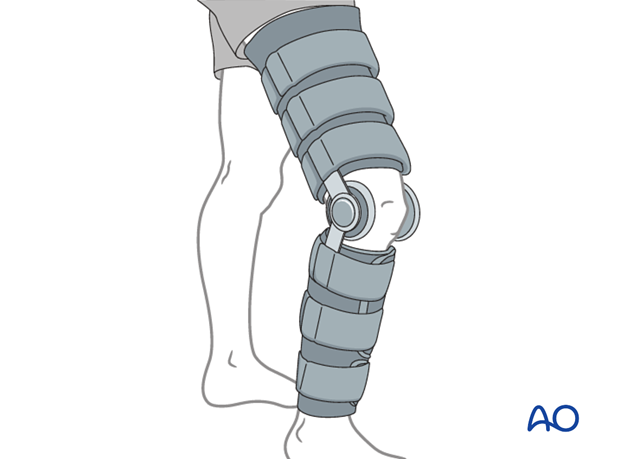
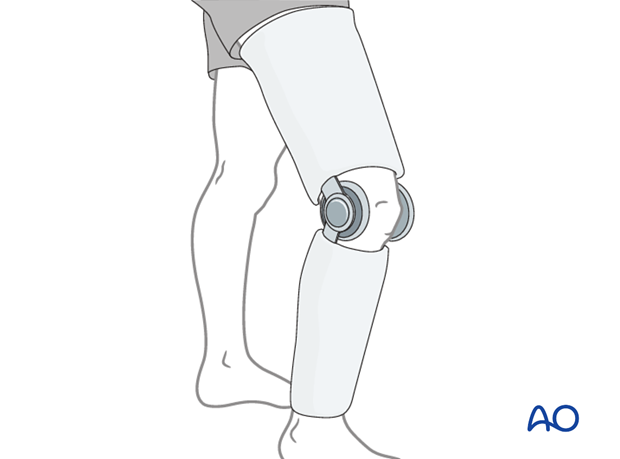
6. Aftercare
For aftercare and rehabilitation following nonoperative treatment please refer to your local protocol.
Pay attention to the neurovascular status, avoid compartment syndrome 2) isometric muscular exercise as early as possible 3) Passive motion of the joint can begin from 4-6 weeks with non-weight bearing.












